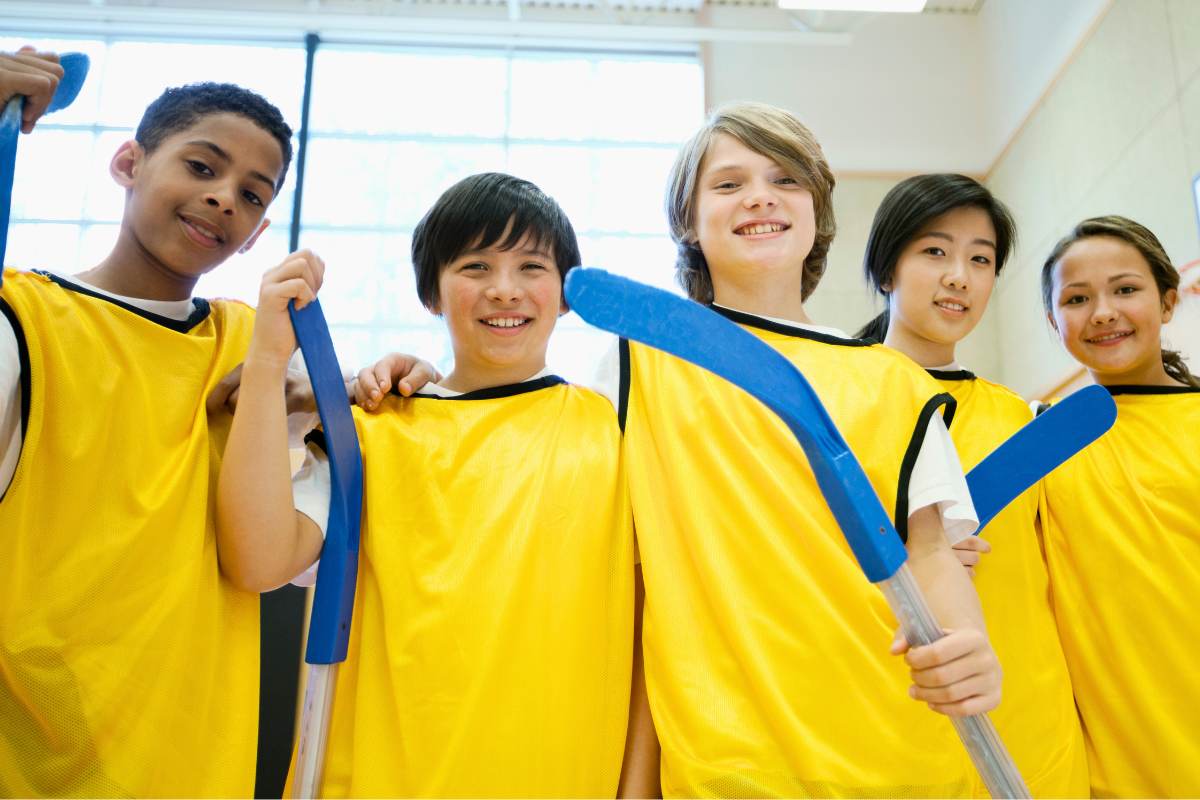Are you looking for simple review games for the classroom? Playing indoor hockey as a review game for test preparation can be a fun and interactive way to engage your students! Here’s a step-by-step guide on how to set up and play the game:
Materials Needed
- Soft foam balls or balloons: These are safer alternatives to a standard hockey puck.
- Makeshift hockey sticks: Use items like pool noodles, broomsticks, or even cardboard tubes.
- Goals: Use chairs, trash bins, or taped areas on the wall as goals.
- Review questions: Prepare a list of questions related to the material that will be on the test.
Setting Up the Playing Area
First, clear a sufficient space in the classroom or a hallway where the game can be played without obstacles. Arrange goals at each end of this area. Make sure these are stable enough not to tip over easily but are also safe and won’t cause injury. Divide the students into two or more teams, depending on how many participants there are. This setup helps in managing the game and ensuring everyone gets a turn.
Game Rules
The game is played similarly to traditional hockey, where teams compete to score goals by hitting the ball or balloon into the opponent’s goal. To integrate test preparation, add a twist: whenever a team scores, play pauses, and that team is asked a review question from the test material. If the team answers correctly, the goal counts; if they answer incorrectly, it does not. This rule keeps the game educational and directly tied to test preparation. After a question is answered, play resumes with the ball given to the opposite team.
Incorporating Educational Content
Adjust the difficulty of the questions based on where goals are scored from; for instance, harder questions can be asked for easier shots. Include a variety of question types such as multiple-choice, true/false, or short answer to accommodate different learning styles. It’s important to provide immediate feedback on answers and allow for brief discussions if a question leads to confusion or is particularly engaging.
Safety and Fair Play
It is crucial to establish clear ground rules to ensure the game is played safely. Emphasize that there should be no pushing, high stick swings, or overly aggressive behavior. Using soft, safe equipment will help prevent injuries, and active supervision is necessary to maintain a focus on both safety and the educational purpose of the game.
Ending the Game
At the end of the game, take a few minutes to review the key topics covered through the questions asked during play. This helps reinforce the material. Encourage students to reflect on what they learned and how the game format may have enhanced their understanding. Finally, celebrate the effort and teamwork displayed by all participants, making sure everyone feels acknowledged for their participation.


